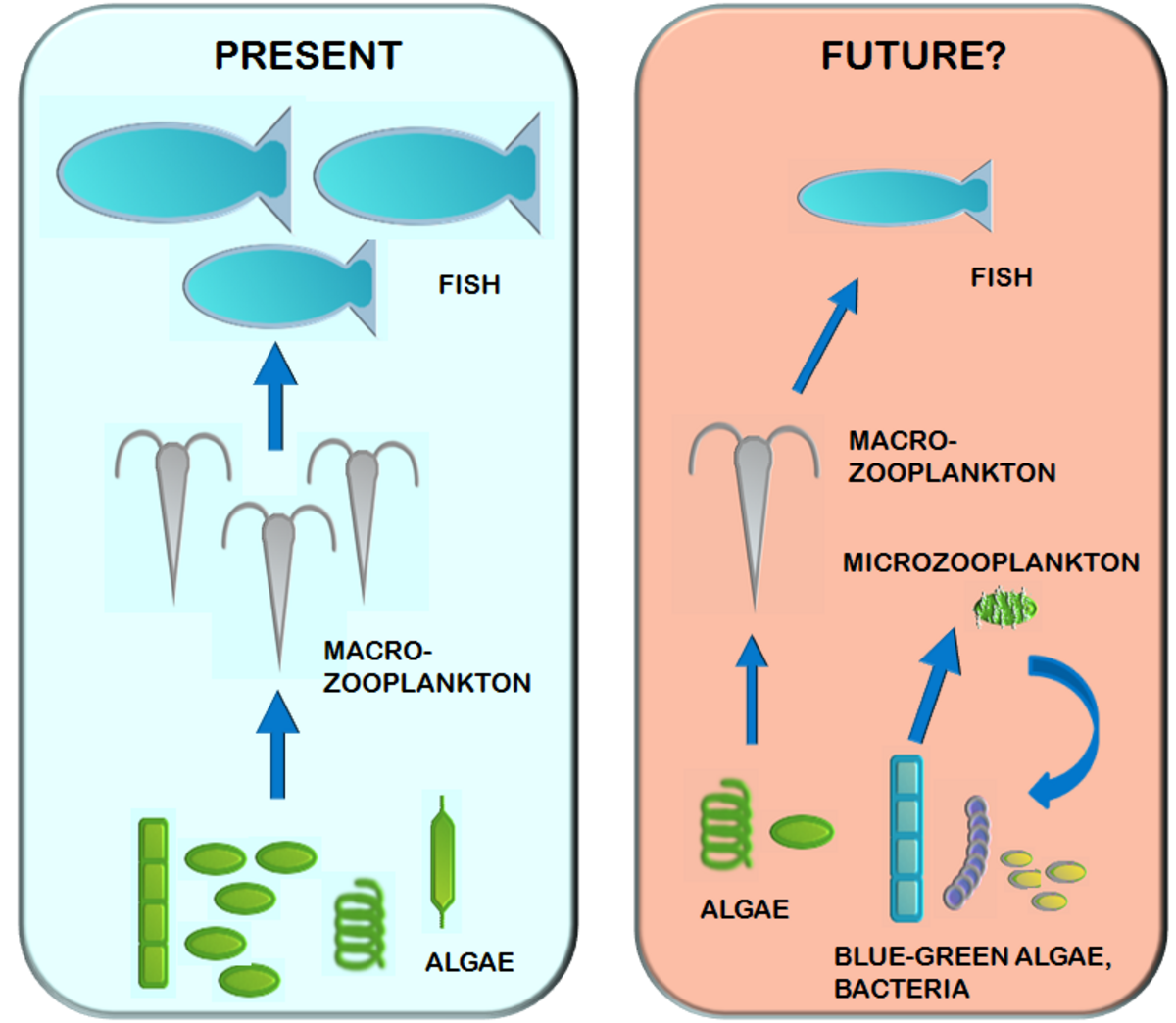AQUASHIFT studies observed complex effects of warming from the individual to the ecosystem level. On this page we give a short summary of their main findings. A more detailed description of the main results of AQUASHIFT, together with references, can be found in the publication:
Sommer et al. 2012 The response of temperate aquatic ecosystem to global warming: novel insights from a multidisciplinary project. Marine Biology, 159:2367-2377
As a result of warming, southern organisms are expected to expand their range northwards while the range of northern organisms shrinks. Many cases of such range shifts have been already reported, and AQUASHIFT studies support these observations. Northward expansion of certain species of dragonflies, and snails were predicted based on field observations. Such changes in species distributions can profoundly alter the species composition of northern and arctic aquatic ecosystems.
Already several studies before the AQUASHIFT program reported that certain organisms shifted their occurrence to an earlier time in the year as an effect of warming. While an earlier spring bloom of algae was observed in some marine mesocosm experiments in AQUASHIFT, other studies have not found such an effect. Most studies agreed that the interaction of water temperature with underwater light determined the timing of the bloom. The amount of light underwater depends on several factors, for example, mixing depth, the turbidity of the water and the weather (cloudiness). Earlier occurrence of zooplankton species, dragonflies and fish were also observed in several studies in AQUASHIFT.
If a predator responds to temperature increase differently than it’s prey, it is possible that under climate warming they don’t occur at the same time and the same place, and the predator starves. Only a few studies in AQUASHIFT found such mismatch between predator and prey, those where relatively extreme climate conditions were simulated and some from temperate streams. In most of the cases, in both marine and freshwater systems, predators adjusted their feeding to the availability of prey.
It has been suggested by researchers that smaller organisms are going to be the winners of climate change. Indeed, AQUASHIFT studies found examples for increased abundance of smaller species compared to large ones among algae and decreasing body size of individual zooplankton as a result of warming. An experiment simulating summer heat waves shifted the algal species composition towards very small plankton, nanoplankton. This means that even short warm periods can decrease body size at the level of whole communities.
Increasing temperature speeds up metabolism- that is why going to the sauna often can help in losing weight. This is not only true for humans, but according to ecological theory, to all organisms. This could mean that under climate warming, algae build up less biomass. Algae are the basic food source in aquatic ecosystems, so less algal biomass means less zooplankton, and less fish. Marine studies from AQUASHIFT did observe lower algal biomass during the spring bloom. However, this was not observed in the lake mesocosm experiments. Cyanobacteria (the so-called blue-green algae) even profited from warming in Müggelsee (lake near Berlin). Unfortunately, cyanobacteria are not a good food source for most aquatic organisms, and their increased biomass under warmer conditions decreases water quality.
Biodiversity experiments often demonstrate competitive exclusion, which means that certain species outcompete others under certain conditions. When the conditions change, other species take over. This is the process of species replacement. Competition and species replacement were found to happen faster under warmer conditions. This is an indication that warming might seriously alter the stability of natural communities.You can study these processes with the help of this game.
In addition, some studies indicated that warming will decrease genetic diversity of the important lake herbivore species, Daphnia. Reduced genetic diversity results in decreased adaptive capacity to changing conditions, with detrimental effects on species survival.
Changes in biogeochemical cycles
Potential changes in biogeochemical cycles in the Baltic Sea under climate warming were studied with the help of mesocosm experiments during AQUASHIFT. These studies indicated potential large effects of warming: bacterial production strongly increased, while phytoplankton production decreased or increased only slightly. In contrast to phytoplankton, bacterial biomass only contributes partly to the food chain which supports fish. In addition, CO2 uptake of the water was less, which could even accelerate warming in a positive feedback loop.



